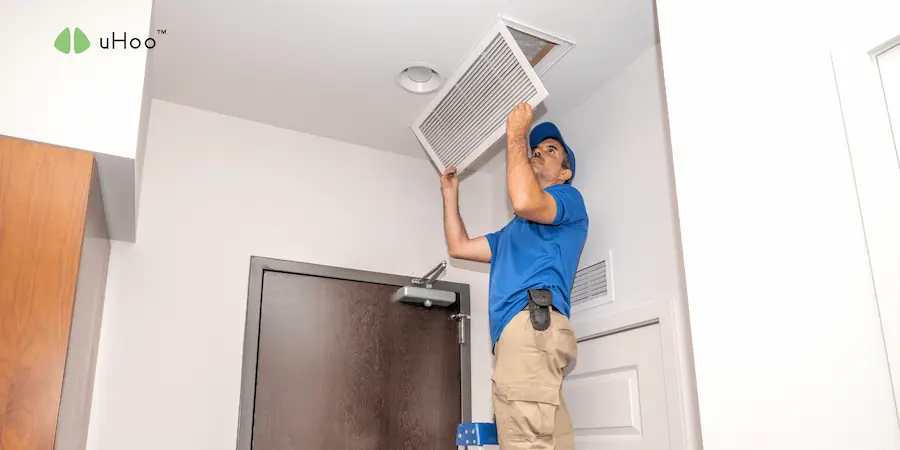When there is wildfire smoke, our homes become our sanctuary. But if not properly managed, your indoor air can quickly become overloaded with harmful smoke particles, even if you keep your windows closed. Knowing how to prevent indoor smoke overload is crucial for protecting your respiratory health.
Here’s your guide on how to prevent indoor smoke overload in your home:
- Create an Airtight Seal: This is your absolute first defense to prevent indoor smoke overload. As soon as you’re aware of outdoor smoke (check your uHoo app for local air quality data!), close all windows and doors. Go a step further: check for drafts around window frames, under doors, and around any wall-mounted AC units. Use weatherstripping, door snakes, or even painter’s tape to temporarily seal any gaps. This significantly reduces the pathways for smoke to enter.
- Optimize Your Air Conditioning for Recirculation: Your AC can either be a source of smoke or a filter. To prevent indoor smoke overload, ensure your AC unit (central or window) is set to “recirculate” mode. This means it will cool and filter the air already inside your home, rather than drawing in new smoky air from outside. If your system has an outdoor air intake vent, make sure it’s closed.
- Upgrade and Maintain Your AC Filters: A basic AC filter won’t do much against fine smoke particles. If your system can handle it, upgrade to a MERV 13 or higher filter. These filters are much more effective at trapping the tiny PM2.5 particles found in smoke. Crucially, check and replace these filters more frequently during smoke events, as they will get clogged faster.
- Use High-Efficiency Portable Air Purifiers: A standalone air purifier with a true HEPA filter is incredibly effective at removing smoke particles already inside your home. Place it in the room where you spend the most time (like your bedroom or living room). Ensure the purifier’s Clean Air Delivery Rate (CADR) matches your room size for optimal effectiveness. This is a key step to prevent indoor smoke buildup.
- Avoid Adding to Indoor Pollution: Don’t undermine your efforts by creating more indoor smoke. During wildfire events, refrain from:
- Burning candles, incense, or using a fireplace.
- Frying, broiling, or grilling indoors, as these cooking methods release significant particulate matter.
- Smoking cigarettes or vapes indoors.
- Using non-HEPA vacuums, which can stir up settled smoke particles.
- Monitor Indoor Air Quality in Real-Time with uHoo: The ultimate tool for knowing how to prevent indoor smoke overload is a uHoo air quality monitor. It provides real-time data on indoor PM2.5 levels – the primary harmful component of smoke. If your uHoo shows these levels rising despite your sealing efforts, it’s an immediate alert that smoke is still infiltrating, allowing you to strengthen your defenses or consider other actions to keep your air clean.
By taking these proactive and informed steps, you can significantly reduce the impact of wildfire smoke and maintain a healthier, safer indoor environment for your family.

